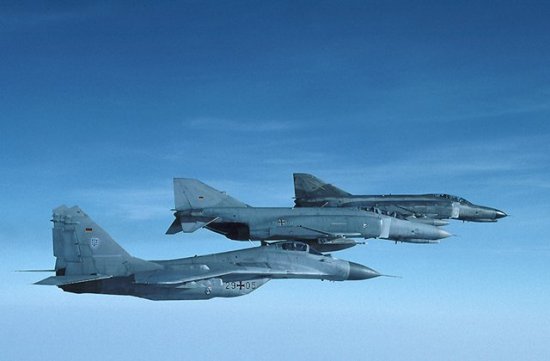|
||||||||||
|
|
||||||||||
|
||||||||||
|
|
||||||||||

However, this was not the case of the vaunted MiG-29s which were almost brand new at the time they were acquired by the Luftwaffe. But even so, these aircraft are being eliminated from service and given to Poland. The reason for this decision, which also probably played a role in the retirement of the MiG-23 and other East German planes as well, is more likely supportability costs. We often hear about how much it costs to buy any particular model of plane, but people often underestimate just how expensive it is to operate and maintain aircraft. Not only do you have to consider the direct costs of flying the plane (pilot pay, fuel, and other consumables), but also the costs of pilot training, the costs of parts and labor to perform routine maintenance, the costs of training ground crew to perform that maintenance, the costs of obtaining and maintaining support equipment needed to service the planes, and the costs of the facilities needed to perform this service and maintenance. We often lump all these factors together into the "life-cycle cost" of an airplane.
As aircraft have become increasingly complex, the life-cycle costs associated with maintaining sophisticated equipment and training crew to operate and service that equipment have grown substantially. For this reason, we see a trend in militaries around the world to standardize on as few types of aircraft as possible. By operating only a couple types of planes, a military can consolidate its training and servicing activities thereby minimizing the amount of money needed for aircraft operations and maintenance.
This motivation is likely a major factor in the German decision to eliminate the MiG-29. The nation can instead focus its maintenance and training budgets on a few Western designs, which tend to share much in common, as opposed to siphoning off a large chuck of that money to support a completely different Soviet design.
This trend can also be seen in the United States where the services are looking to eliminate a wide variety
of aircraft and standardize on only a few designs, particularly the
F-35 Joint Strike Fighter.
The US military hopes to replace at least
four types of planes with this single airframe, which will allow the services to make tremendous savings in support
costs.
- answer by Jeff Scott, 2 June 2002
Read More Articles:


|
Aircraft | Design | Ask Us | Shop | Search |

|
|
| About Us | Contact Us | Copyright © 1997-2023 | |||
|
|
|||